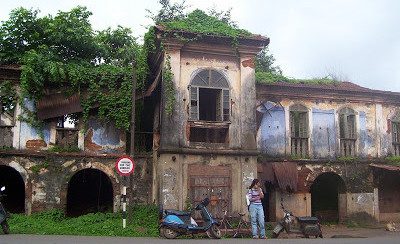Goa while being a colony of Portugal had been bestowed some democratic rights. One of them was the right to elect its representative to the Municipality of Salcete. This right to vote came at a heavy price that Goans would pay much later. September 21, 1890 saw 23 Goans lose their life. Their crime? Unwillingness to be subjugated to the undemocratic ways of the Vasco Guedes Carvalho de Menezes, Portuguese Governor of Goa. This led to the Margao massacre.
Background
In the municipal election of 1890 two parties contested elections. Partido Ultramarino was supported by the Governor. Partido Indiano was set up by Jose Inacio de Loyola. Both were rivals to each other. The Governor wanted his candidate, Brandao (a Portuguese) to win the elections. Hence, the authorities were rigging the election in Governor’s favour.
Interestingly, name of both the parties was derived from newspapers being printed at that time. Partido Indiano was named after ‘A India Portuguesa’ founded in 1861 by Roque Correia. Jose Loyola was its editor. Partido Ultramarino was named after ‘O Ultramar’ run by the Costa family of Margao.
Both parties went head to head in the municipal election of 1890. To the annoyance of Governor Vasco Guedes, Cristovao Pinto (a Goan) of Partido Indiano won the elections. The Governor reacted to the development by dissolving the Camara Municipal de Salcete.
Day of Margao massacre
Fresh elections were to be held on September 21, 1890. Partido Indiano fielded the same candidates. Members of the same party began to protest gross irregularities in the voting process. They were gathered in the vicinity of Holy Spirit Church, Margao. The army was called to calm things down. By the time the army arrived, the protesters were already calmed down.
A photographer began to click pictures. Seeing this the administrator ordered the soldiers to fire upon the civilians. The order is said to be given out of fear of being exposed through the photographs being taken. The civilians began to run for their life. Some even sought refuge in the house of Dr. Salvador Alvares.
The family to this day has framed the bullet marks on its walls. On the frame is carved the date of the massacre. Soon after this the members of Partido Indiano went into hiding. Even escaping to British India. They returned to Goa only after the then ruling government fell in Portugal and Governor Jose Guedes was replaced in 1891.
Margao massacre is remembered in a poem by Carlos Trinidade Dias. It also mentions the efforts taken by Father Lucas after the gun fire.
Konkani version
Setembrache ekvissaveru
Camrachem foddlem daru
Deddxen soldad addle…
Mis zaunchea vellaru
Rogtacheo zaleo zori
Pad’Lucas alment mari
Otmen salvar kori.
English version
On the 21st of September
The municipality doors were shattered
150 soldiers were summoned…
When the Mass was in progress
There were rivers of blood
Padre Lucas sprinkled holy water
And saved souls.
September 21 will be etched in the memory forever. For the sacrifices made by those innocents.
Source – Goa: a Daughter’s Story by Maria Aurora Couto, Goa Rewound by Alexandre Moniz Barbosa, TOI, Goa streets.


